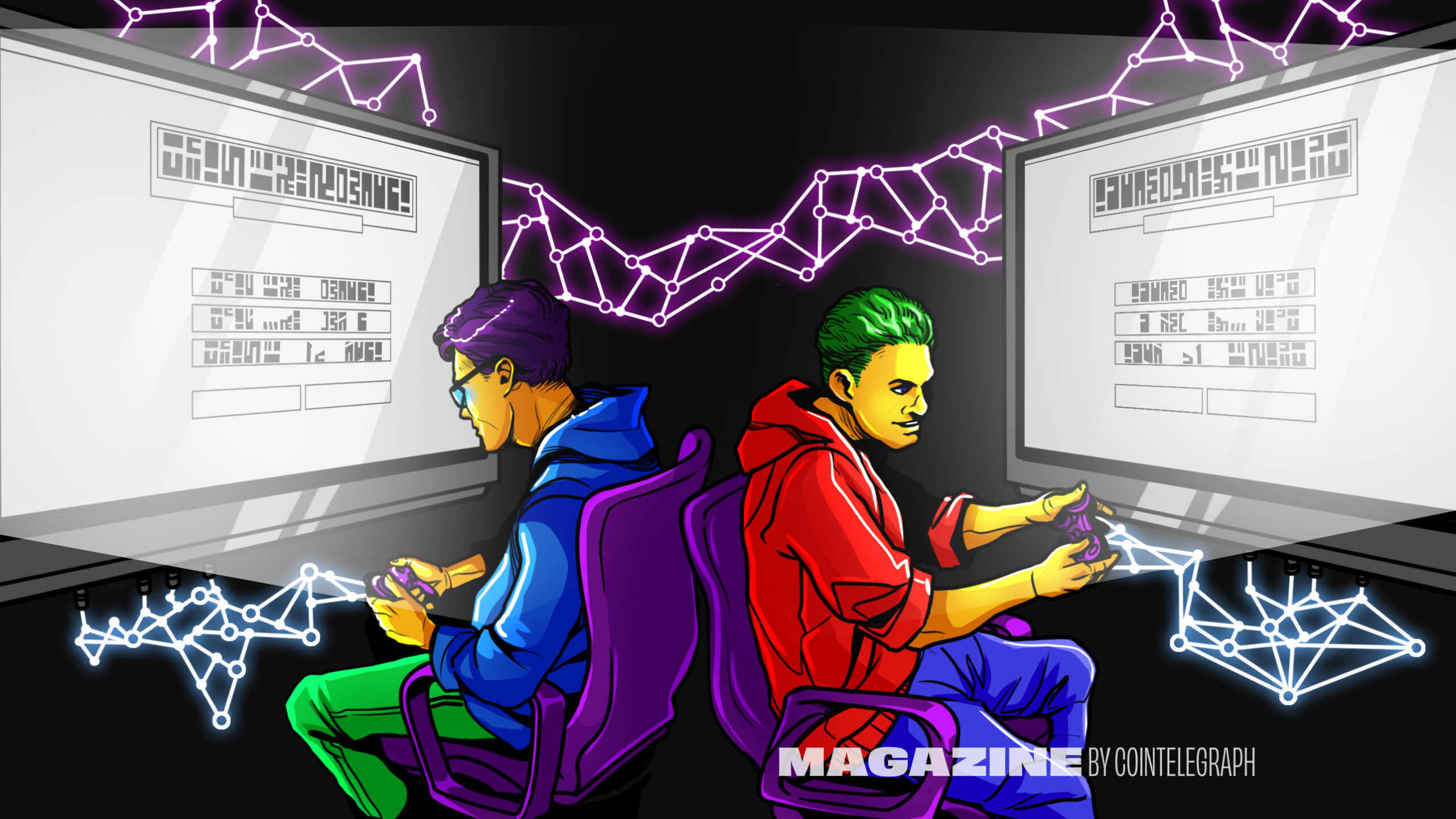Despite promises of “decentralization” and “trustless ownership,” the vast majority of crypto games today are, at best, partially decent
Despite promises of “decentralization” and “trustless ownership,” the vast majority of crypto games today are, at best, partially decentralized. Web3 is the branding, but in reality, most are “Web2+.” Game assets live on-chain, yet the game logic, state and storage remain off-chain on centralized servers.
Why? Simply put, it’s not easy to build a fully decentralized game on-chain. Blockchains in 2023 are still far too slow for processing the gargantuan number of transactions that video games require. Lattice CEO Ludens tells Cointelegraph:
“Building a fully on-chain game right now is a little bit like building video games on a computer from the 1980s. We don’t yet have complex on-chain games yet because the blockchains – even Layer 2s – are not powerful enough right now.”
Furthermore, developers have to make important tradeoffs when using blockchain technology to make the game widely accessible to non-crypto audiences.
For instance, Aurory’s developers created a hybrid inventory system called Syncspace, which allows players to leave their assets in Aurory’s custody, but move them into their Solana wallets if they wish.
“Syncspace is Aurory’s UX strategy,” Julien Pellet, Aurory’s infrastructure technical director, tells Magazine. “Not every player wants to handle the complexities of a crypto wallet. We accepted that tradeoff by building Syncspace and allowed some assets to live off-chain in order to bring Aurory to a wider audience of non-crypto-native Web2 players”
But there are passionate communities of degens interested in full-fat, on-chain “autonomous worlds” that are built from the bottom up by the players. One group even modded a game to form a communist collective so everyone “won” the same. Autonomous worlds, as they’re sometimes known, face a lot of hurdles, but given the limitations, the early results are impressive.

How Web3 games started
Web3 games are grappling with a bunch of other issues due to the brief history of the emerging sector. During the last crypto bull cycle, most blockchain games tried to be financial products first and video games second.
That strategy helped catapult the play-to-earn gaming sector into brief mainstream prominence when token prices were going up. But unfortunately, if the appeal is based on delivering a financial return, then enthusiasm can disappear fast when token prices take a dive.
Games like Axie Infinity, Pegaxy or Crabada, which once promised spectacular returns for players, have since fallen off a cliff. For Axie, unique active wallets peaked at around 700,000 in November 2021 but now tally more often in the eight to 10,000 range today.
The Metaverse Index (MVI) token, which tracks a collection of major gaming and metaverse tokens, is down 95.6% from its all-time high in November 2021.

In response, Web3 games are now shunning the “play-to-earn” catchphrase that helped propel the sector to prominence, embracing phrases like “play-and-earn” or “play-and-own,” and deemphasizing the profits while focusing on benefits such as the ownership of game assets, or simply how fun the game is.
“At the end of the day, the core focus of games should be leisure and entertainment, not delivering a financial return,” Aurory’s backend tech director Jonathan Tang tells Magazine.
“As Web3 game developers, our job is to think of how to leverage blockchain technology and what it brings to video gaming, while keeping the game fun as a priority.”
Some believe the emphasis on financial returns has tainted the industry’s image, not least due to an influx of scammers.
Pellet adds: “The last bull run attracted scammers that have multiple elaborate strategies such as cloned websites and fake projects to divert millions of dollars from legit players and teams. With Web2 games, it’s much harder to pull off those types of scams.”

Enter on-chain games
Encouragingly, however, a smaller community of builders interested in building autonomous worlds are trying to bring on-chain maximalism to blockchain games.
In contrast to their Web2.5 counterparts, fully on-chain games have their assets, and the game logic, state and storage live on-chain. The game state refers to the current status of the gaming world, such as player progression and the items they possess, while game logic simply refers to the rules of the game — how players move, interact, collect and consume.
Why bother with having it all on-chain? Doing so ensures the game’s state is always immutable and transparent on the blockchain. But most importantly, it opens the door to the same kind of open composability that is possible in DeFi and enables an aggregator like the 1inch…
cointelegraph.com
